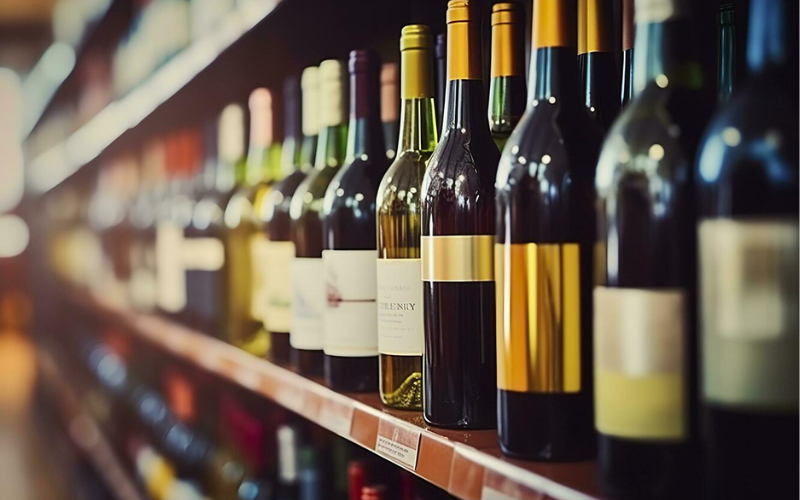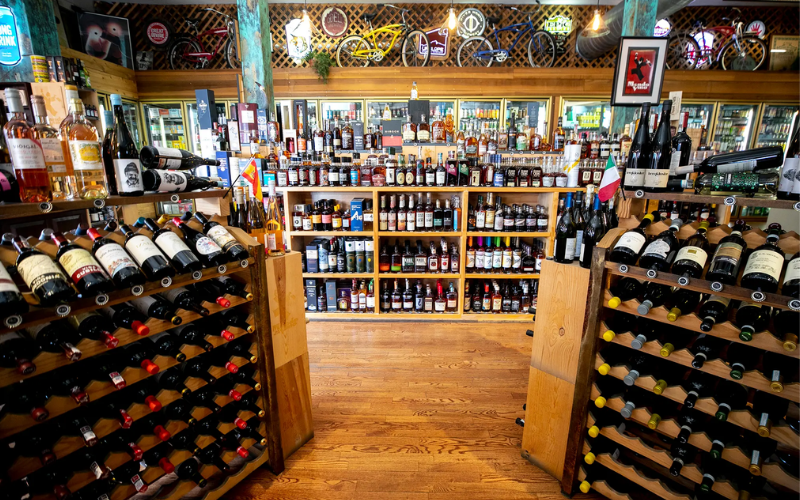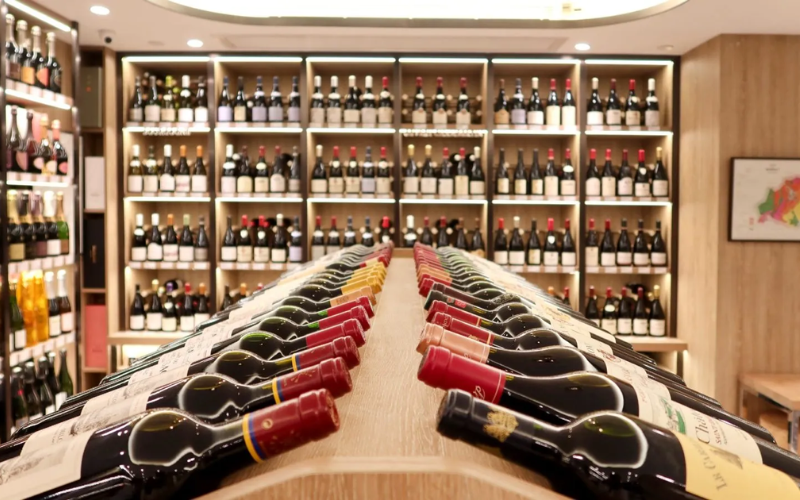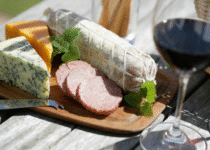The Ultimate Guide to Choosing, Storing, and Enjoying Wine

Wine is far more than a simple drink—it’s emotion, craftsmanship, and centuries of tradition captured in a single bottle. Each pour tells a story: of the land where the grapes grew, the weather that shaped them, and the people who turned them into something extraordinary. Whether you’re raising a glass after a long day or building your first small collection, understanding wine deepens your appreciation for its beauty and complexity.
Learning how to choose, store, and savor wine turns it from a casual indulgence into a meaningful experience. It’s not just about knowing labels or vintages—it’s about connecting with the journey behind each bottle. From the moment you uncork it, wine invites you to slow down, to notice the subtle aromas, textures, and flavors that unfold with every sip.
This guide is your companion through that journey. It walks you step by step—from selecting your first bottle with confidence, to storing it under the right conditions, to pairing it thoughtfully with your favorite meals. By the end, you’ll see wine not as something intimidating, but as something to explore and enjoy—an ever-evolving story best experienced one glass at a time.
Key Takeaways
-
Choosing the right wine means understanding type, body, region, and pairing.
-
Proper wine storage drastically prolongs taste, aroma, and life.
-
Serving temperature, decanting, and glass shape all influence the experience.
-
Knowing when to splurge and when to save can elevate both your palate and your wallet.
-
Visiting a wine store with a plan makes your choices more confident, intentional, and enjoyable.
Understanding Wine: A Beginner’s Compass
To appreciate wine, you first need to understand its basics. Wine is simply fermented grape juice—but inside that simplicity is endless variety shaped by grape type, region, altitude, soil, and craftsmanship.
Types of Wine
-
Red Wine: Made from dark grapes; tannic, bold, rich in flavor.
Think Cabernet Sauvignon, Merlot, Shiraz. -
White Wine: Made from green or yellow grapes; crisp and light.
Try Chardonnay, Sauvignon Blanc, Riesling. -
Rosé Wine: Balanced between red and white, lightly fruity, perfect for warm days.
-
Sparkling Wine: Effervescent and celebratory; Champagne, Cava, Prosecco.
-
Dessert Wines: Sweet, often fortified; Port, Sauternes, Madeira.
How to Choose the Right Wine
Choosing wine isn’t about finding the “best” bottle—it’s about finding your bottle. Here’s how.
1. Start with the Occasion
The context matters. Romantic dinner? Red. Summer picnic? Rosé or chilled white. Celebration? Sparkling. Matching the mood can help you narrow the options instantly.
2. Know Your Flavor Preferences

Ask yourself: do you prefer dry or sweet? Light or bold? Smooth or crisp?
-
For bold, earthy flavors, lean toward Cabernet Sauvignon or Syrah.
-
For fresh, easy sips, go for Pinot Grigio or Sauvignon Blanc.
-
For velvety smoothness, a Merlot or Malbec rarely disappoints.
Don’t overthink complexity—just trust your palate.
3. Read the Label (Without Fear)
A wine label holds secrets: region, grape, vintage, and alcohol percentage (ABV).
Higher ABV (13–15%) often means richer flavors. Older vintages can mean softness and depth, while newer ones taste fresher.
4. Match Food and Wine Thoughtfully
Food pairing is part science, part intuition.
-
Red meat or hearty dishes: Reds like Cabernet Sauvignon or Malbec.
-
Poultry or seafood: Whites or rosés—like Chardonnay or Pinot Noir.
-
Spicy cuisines: Slightly sweet varieties (Riesling, Gewürztraminer) balance intensity.
-
Cheese boards: Almost anything goes—but for safety, pair cheese strength and wine body.
5. Ask for Help at Your Local Wine Store
Walking into a wine store can feel overwhelming, but staff are usually passionate and eager to help. Tell them your occasion, budget, and flavor preferences—they’ll guide you to ideal picks.
Think of a wine store as your classroom, with every bottle a lesson in taste.
The Art of Storing Wine
You finally found the right bottles—now what? Storing wine properly preserves its character.
1. Temperature Control
Wine’s enemy is heat. The sweet spot is around 55°F (13°C).
Fluctuations age the wine prematurely and distort flavors.
If possible, store bottles in a cool, dark, slightly humid space—basement, wine fridge, or temperature-stable cabinet.
2. Angle and Position
For corked bottles, store horizontally. This keeps the cork moist, preventing air leaks. Screw caps? Upright is fine.
3. Avoid Light and Vibration
UV light breaks down compounds in wine. Keep it away from windows or direct sun. Vibrations from appliances or frequent movement can disturb aging.
4. Humidity Matters
Around 70% humidity is ideal. Too dry, and corks crack; too damp, and labels peel off. Small humidifiers work wonders for collectors.
5. Know Which Wines Age Well
Most wines are meant for near-term drinking.
But structured reds (like Bordeaux or Barolo) and certain whites (Chablis, Riesling) age beautifully—gaining complexity after years.
Serving Wine Like a Pro
You don’t have to be a sommelier to pour like one. A few key habits make a huge difference.
1. Right Temperature
-
Reds: Slightly below room temp (60–65°F or 16–18°C).
-
Whites: Chilled but not icy (45–50°F or 7–10°C).
-
Sparkling: Cold (40°F or 4°C).
Too warm, and wines dull; too cold, and they lose aroma.
2. Decanting
Decanting aerates wine—letting oxygen soften tannins and awakens aroma.
Red wines benefit most, but even whites open nicely with a few minutes of air.
3. Choosing the Right Glass
Yes, glass type matters.
-
For young reds, wider bowls = more oxygen, more aroma.
-
For crisp whites, tall narrow glasses keep freshness.
-
For sparkling, flutes maintain bubbles longer.
4. Pouring Essentials
Pour just to the widest part of the glass—this maximizes swirling room. Let the wine breathe. Let yourself breathe too.
How to Tasting Wine (Without Pretension)
Forget the intimidating rituals—wine tasting is sensory play. The magic comes from tuning into sight, smell, and taste.
Step 1: Look
Hold the glass against white background. Color hints at age—deeper hues mean maturity for reds; golden tones for whites.
Step 2: Smell
Swirl gently and inhale. Identify notes—fruit, spice, earth, oak, sometimes even leather or honey. The nose reveals the story before the sip.
Step 3: Sip
Take a small sip and let it roll through your mouth. Notice body, acidity, and balance.
A good wine feels cohesive—none of its traits overpower the others.
Step 4: Reflect
Ask: Did it excite you? Comfort you? Surprise you? There’s no “right” reaction, just authenticity.
Building Your Personal Wine Collection
Building a collection doesn’t mean owning hundreds of bottles—it’s about intention and discovery.
Start Small
Buy what you love, then expand slowly. Keep different types for different moods or meals—reds for depth, whites for freshness, rosés for versatility.
Balance Everyday and Special Wines

A mix of affordable daily drinkers and 2–3 splurge bottles works best. Vintage champagne or a fine Barolo can anchor your collection for milestones.
Track and Rotate
Maintain a simple log: name, vintage, region, purchase date. Rotate older bottles to enjoy wines at their peak.
Visit the Wine Store Often
Regular trips to your local wine store help you discover emerging regions, boutique producers, and seasonal recommendations.
It’s like traveling the world—one glass at a time.
The Emotional Side of Wine
Wine connects emotion and memory. A glass can transport you back to a sunset dinner or your first trip abroad.
It reminds us that life’s pleasures—like flavors—are fleeting, and that’s what makes them precious.
Sustainability and Modern Wine
Today’s wine world is changing.
Organic, biodynamic, and low-intervention wines are rising, reflecting both ethics and taste evolution.
-
Organic wines avoid synthetic pesticides.
-
Biodynamic wines follow lunar cycles and holistic farming.
-
Natural wines use wild fermentation and little intervention.
These choices don’t just impact your palate—they connect drinking to mindfulness.
When to Splurge vs. Save
Higher price doesn’t always equal better wine.
-
Splurge when you’re seeking memorable, collectible bottles (anniversaries, gifts, aging potential).
-
Save for casual gatherings, tastings, or experimentation.
Plenty of under-$20 wines deliver stunning experiences—especially from Spain, Argentina, and Portugal.
The trick? Build trust with your preferred wine store so recommendations align with your taste and budget.
Hosting a Wine Night
Hosting wine nights is one of the best ways to deepen appreciation—and friendships.
Plan a Theme
Try “Wines of Italy,” “Summer Rosés,” or “Blind Tasting Challenge.”
Keep it playful, not competitive.
Serve Simple Pairings
Cheese boards, cold cuts, olives, chocolate, and crusty bread work beautifully. Let wine take the spotlight.
Encourage Honest Conversation
Skip jargon. Ask guests what they feel, not what they taste. The best discussions often sound like poetry rather than analysis.
Common Wine Mistakes to Avoid
-
Over-chilling whites: Mutes aroma.
-
Storing upright: Dries cork.
-
Using leftover old wine: Oxidized flavor ruins the experience.
-
Ignoring glassware: Shape genuinely alters flavor.
-
Assuming price = quality: Many mid-priced wines outperform expensive ones.
Conclusion
Wine is more than a drink—it’s a delicate balance of science, art, and emotion. Each bottle tells a story shaped by the soil, the weather, and the hands that crafted it. Learning how to choose, store, and enjoy wine transforms every glass from something ordinary into a mindful experience.
As you start recognizing the subtle language of wine—tannins, acidity, balance, and finish—you begin to understand its personality. A quick chat with your local wine store expert can open doors to regions and varieties you might never have discovered on your own. Every bottle you uncork offers a glimpse into a different place and time, connecting you to traditions that span centuries.
What makes wine special isn’t just its flavor—it’s the ritual, the patience, and the curiosity it inspires. With each tasting, your preferences evolve, your appreciation deepens, and your confidence grows. You learn not just what you like, but why you like it.
FAQs
1. How do I know if wine has gone bad?
If it smells like vinegar, wet cardboard, or must, it’s likely oxidized or corked.
2. How long can I keep an opened bottle?
Generally 3–5 days with a cork or vacuum seal in the fridge. Red wines last slightly longer.
3. What’s the best beginner wine?
Try an easy-going Pinot Noir or Sauvignon Blanc—they’re balanced and forgiving on most palates.
4. Can I store wine in my kitchen?
Avoid it if possible—kitchens fluctuate in temperature. A cool closet or cabinet is better.
5. Should wine always be decanted?
Not always. Young reds benefit most. Whites and sparkling wines generally do not need decanting.


